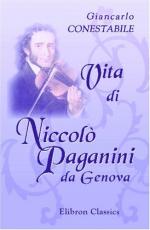|
This section contains 2,429 words (approx. 9 pages at 300 words per page) |

|
The Onset of Change. In 1750 the countries of Europe were poised for radical transformation in all aspects of life, including the arts. Revolutionary changes in economics, politics, and society were about to affect how Europeans expressed themselves and their perceptions of the world in art, architecture, literature, and music. These changes also influenced how people viewed, read, or heard artistic creations and what they expected from them. Even though it is possible to chart a general succession of various artistic "styles" in European art between 1750 and 1914—Classicism, Romanticism, Realism, Impressionism, and Modernism—one must be wary of too rigidly defining the characteristics of any one style. Still, when World War I broke out in 1914, the Classicism that was the dominant mode in 1750 was but a distant memory in a culturally fragmented Western world, where Modernism was establishing itself as the leading artistic style. Like diplomatic missives...
|
This section contains 2,429 words (approx. 9 pages at 300 words per page) |

|



